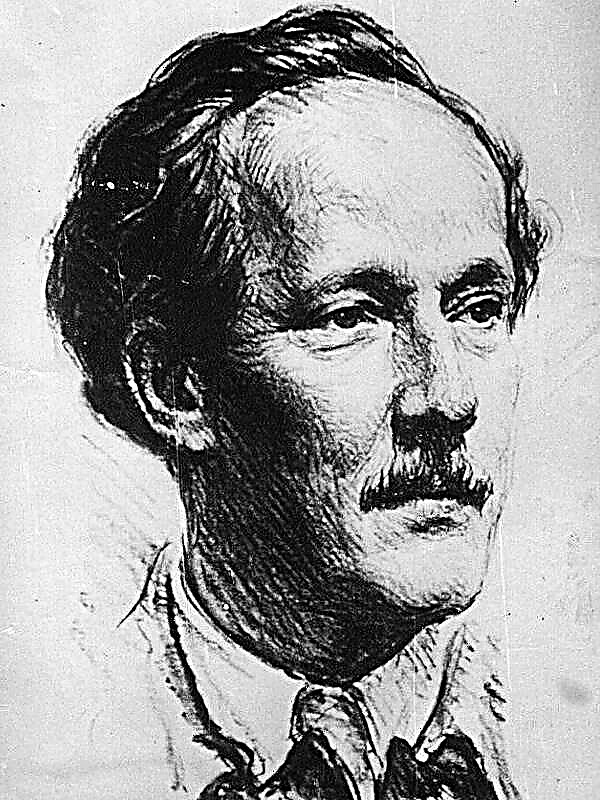Why biotechnology is needed
In the late 1970s, transgenic bacteria were created that produce human insulin. Today, they help support the lives of millions of people with diabetes.
It was previously thought that it was impossible to cure hereditary diseases in which some human genes do not function or function poorly. Doctors now have a new method of treatment - gene therapy. Thanks to it, some forms of congenital blindness, immunodeficiency and even cancer are treated.
Genetic engineering is already being applied in various spheres of human life, but the most debate is whether it is possible to eat genetically modified foods.
How it works
At the heart of the genetic program of a living organism, whether it is a bacterium, a fungus or a person, lies a DNA molecule. It has been well studied - more than two million scientific publications have been devoted to this molecule.
Active genes are sections of DNA that determine some signs of the body. A person has about 20-25 thousand.
Today ... we can handle genetic material in much the same way as with words ... in a text editor. Genes can be removed, altered, transferred from the genome of one organism to the genome of another and even synthesized in vitro.
So get genetically modified organisms - GMOs.
Genetic engineering is technology, and GMOs are its result. If the gene responsible for the production of the toxin is specifically introduced into the plant, it will become toxic. On the other hand, if you take a toxic plant and remove certain genes from it, it will cease to be toxic.
Where does fear come from?
About seven billion people live on Earth. About two billion are malnourished or suffer from a lack of vitamins. Every year, more than 250,000 children in developing countries go blind due to a lack of vitamin A. At the same time, experimental plantings of gene-modified (GM) rice rich in beta-carotene and able to solve this problem in the Philippines were trampled by fighters with GMOs.
The fear of GMOs is widespread, it affects the decisions of politicians and inhibits the development of biotechnology. According to a VTsIOM survey conducted in 2014, three quarters of Russians were willing to pay more for products that “do not contain GMOs”. More than 80% of the population advocate banning GMOs and believe that it is harmful to health.
“GMOs are not natural”
At the heart of food myths is the thesis that everything naturalthat exists in nature is by definition useful, but that’s all artificialcreated by man carries a potential health hazard.
At the same time, natural pale grebe contains more than a dozen different natural toxic compounds. Death by poisoning her is long and painful.
Thousands of people in developed countries die every year from food poisoning associated with completely natural pathogens, but no one has died from GMOs.
"Scientists have proven the harm of GMOs"
In 2014, a British scientific journal (Critical Reviews in Biotechnology) published a review of 1783 scientific papers published over the past 10 years on GMOs. Of these, 770 are devoted to studying the effects of GM products on humans and animals. The article concludes that there is no scientific evidence of the toxicity of GM varieties approved for sale.
Nevertheless, fighters with GMOs cite rare studies that allegedly prove the opposite. Let's consider them in more detail.
GMOs are investigated in approximately the following way: experimental animals are divided into two groups. One is fed regular food, and the other is genetically modified. After some time, they are compared and looking for differences.But the more parameters are taken into account, the higher should be the threshold of statistical error (Bonferroni correction). The authors of studies on the dangers of GMOs did not take this into account, for which they were criticized by the scientific community.
The real scandal was caused by the research of Seralini. Shocking photographs of rats with terrible cancerous tumors were replicated and perceived by society as vivid evidence of the harm of GMOs. For his experiments, Seralini took not ordinary rats, but Spreg-Dowley rats. This is a specially drawn line on which the formation of cancer in mammals is examined. Tumors in these rats form regardless of whether they eat regular food or GMOs. The same tumors should have appeared in the control group of rats.
Opponents of GMOs are characterized by a polemic style called the “Guiche gallop”.
The peculiarity ... is the listing in a row of a large number of inaccurate, erroneous or irrelevant statements ... As a result, the opponent, who is forced to consistently refute them, looks like an impenetrable bore.
Nevertheless, an entire chapter of the book is devoted to criticizing the research and statements of the doctor of biological sciences Irina Ermakova, who is invited to television and attracted as an expert to the State Duma. The author explains why the scientific community does not take her research seriously, and gives reasoned criticism of her theses.
“The safety of GMOs has not yet been 100% proven”
Only the danger of something can be proved experimentally. Absolute security of anything is impossible to prove in principle.
Opponents of genetic engineering say that the safety of GMOs is not 100% proven, but we will go one step further and state the statement that the safety of using the word "GMO" is not 100% proven.
Even if safety for animals and humans has been investigated, one can always say that any new technology has not been tested on the second, third generation and so on ad infinitum. Following this logic, you can not use drugs developed over the past 30 years, use mobile phones, microwaves and Wi-Fi.
Nevertheless, this moment has been investigated. In 2012, a review was published in the scientific journal Food and Chemical Toxicology, which included 12 studies on the use of GMOs in food on several (two to five) generations of animals. The authors concluded that there are no negative effects of GMOs compared with varieties of ordinary plants.
“GMOs are interference in nature”
Nature constantly genetically modifies itself. Each new generation of the body receives a small portion of random genetic mutations. Sometimes these mutations can lead to illness or death of the body, and sometimes give it an advantage over other individuals. This is an important evolutionary mechanism. We can say that we are all genetically modified mutants relative to our parents.
Man himself has intervened in nature for a long time. Since ancient times, he tried to sow the seeds of those plants that, for example, give larger fruits or are resistant to frost. Later, he learned to mix varieties and obtain plants with new properties. Mutagenesis has replaced hybridization, when plants are exposed to radiation or special chemicals to speed up the mutation process - this is the way modern breeding works.
Genetic engineering works more predictably and efficiently.
If selection is based on random genetic changes and artificial selection, then genetic engineering is an elaborate act of creation.
Man is not the only one who genetically modifies other organisms. So, some soil bacteria embed parts of their DNA in the genome of plant cells so that they produce the nutrients they need. In 2015, a team of researchers found such inserts in all samples of cultivated sweet potato (sweet potato).That is, people have eaten transgenic plants with bacterial genes for thousands of years and did not even suspect it!
“GMOs are a threat to the environment”
To protect potato crops from pests, special pesticides - insecticides are sprayed over the fields. At the same time, innocent arthropods die, ecosystems around such fields are destroyed. Genetically modified potatoes produce protein that is toxic to pests in foliage (but not in tubers), so there is no need for these pesticides.
Another example. The dung of ordinary pigs contains a substance that enhances the growth of algae; as a result, the water bodies closest to pig farms begin to “bloom”, and fish and other aquatic organisms die in them. Gene-modified pigs (Enviropig) assimilate this substance, thereby preventing local environmental disasters.
“GMOs are a conspiracy of transnational corporations”
Many opponents of GMOs believe that the creation of GMOs is part of a secret conspiracy. Allegedly, transnational corporations bribed scientists, scientific journalists, editors and reviewers of scientific journals, official representatives of the World Health Organization and other supporters of genetic engineering for the sake of obtaining superprofits, so they can not be trusted.
It is very difficult to convince people who believe in conspiracy theory. But they can be given what they love more than anything else - a different conspiracy theory, or maybe even three or four.
Pesticide manufacturers may be involved in a conspiracy against GMOs. After all, if GM plants learn to defend themselves from pests or weeds, pesticides against them will stop buying.
But what if distrust of GMOs is beneficial for transnational corporations that produce seeds of GM plants? If an independent laboratory displays a new GM plant variety, then due to bureaucratic obstacles and public distrust, it is easier for it to sell a patent to the same corporations, rather than founding a company and launching the product on the market.
Perhaps these are large organic food companies that exploit the illiteracy of consumers and fan myths about GMOs in order to sell their “natural” products with great success?
The idea that you should always look for forces that are beneficial should be treated very carefully.
The most important thing
Genetically modified foods approved for sale are no more dangerous than conventional ones. Numerous experiments even on several generations of animals did not reveal harm.
The main reason for the rejection of modern biotechnology is the fear of the unknown. The author encourages the reader not to become a victim of fear caused by ignorance, but to join in scientific discoveries, engage in science and share scientific knowledge with others.












